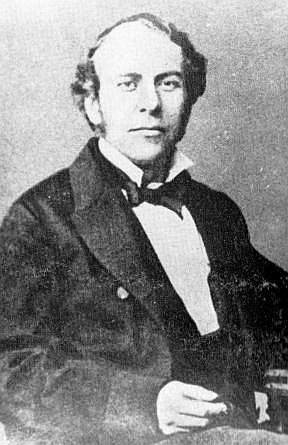Nationality United Kingdom Influenced Arnold Toynbee Died July 7, 1866 | Name Joseph Toynbee Fields otologist Children Arnold Toynbee | |
 | ||
Books The Diseases of the Ear: Their Nature, Diagnosis, and Treatment, The Deaf and Dumb People also search for Arnold Toynbee, Arnold J. Toynbee, Harry Valpy Toynbee | ||
Joseph Toynbee (30 December 1815 – 7 July 1866) was an English otologist, whose career was dedicated to pathological and anatomical studies of the ear.
Contents

Personal life
Joseph Toynbee was born in Heckington, Lincolnshire in 1815. He was the second son of fifteen children of the wealthy land owner and farmer George Toynbee (1783–1865). His first wife and mother of Joseph was Elizabeth Cullen (1785–1829). After several years of private teaching, he attended King's Lynn Grammar School in Norfolk. At the age of seventeen he studied medicine. His first experience in medicine came when he was apprenticed to William Wade of the Westminster General Dispensary in Gerrard Street in Soho London. He studied anatomy under George Derby Dermott (1802–1847) at Hunterian Medical School at the Great Windmill Street, and later gained a reputation as a prosector. He was married, in August 1846, to Harriet (née Holmes), daughter of Nathaniel Holmes. They had nine children together, including economic historian Arnold Toynbee (1852–1883), and daughter Grace (née Toynbee), who married Percy Faraday Frankland in 1882.
Another son, Harry Valpy Toynbee (1861–1941), was the father of universal historian Arnold J. Toynbee, and archaeologist and art historian Jocelyn Toynbee.
He died in July 1866 while conducting experiments with prussic acid and chloroform as a remedy for tinnitus. Either one of these substances or their combination are responsible for his death. He was buried at St Mary's Church, Wimbledon.
Career
He performed studies on the functionality of the Eustachian tube and of the tympanic membrane and tried to restore attempts, the tympanoplasty. When St. Mary’s Hospital was founded in Paddington, he a became an aural surgeon and a lecturer on ear diseases — his course of clinical lectures being published in 1855 and 1866. During this time period he composed two major works: "A Descriptive Catalogue of Preparations Illustrative of the Diseases of the Ear" (1857), and "The Diseases of the Ear: Their Nature, Diagnosis and Treatment" (1860). From his many dissections of "deaf ears", he studied ankylosis of the stapes.
He was elected a Fellow of the Royal Society in March 1842.
Austrian otologist Adam Politzer (1835–1920) penned biographies in French (1905) and German (1914) honoring Toynbee, whom Politzer regarded as a major influence.
Works
Toynbee genealogy
Beginning with Joseph, the Toynbees have been prominent in British intellectual society for several generations (note that this diagram is not a comprehensive Toynbee family tree):
